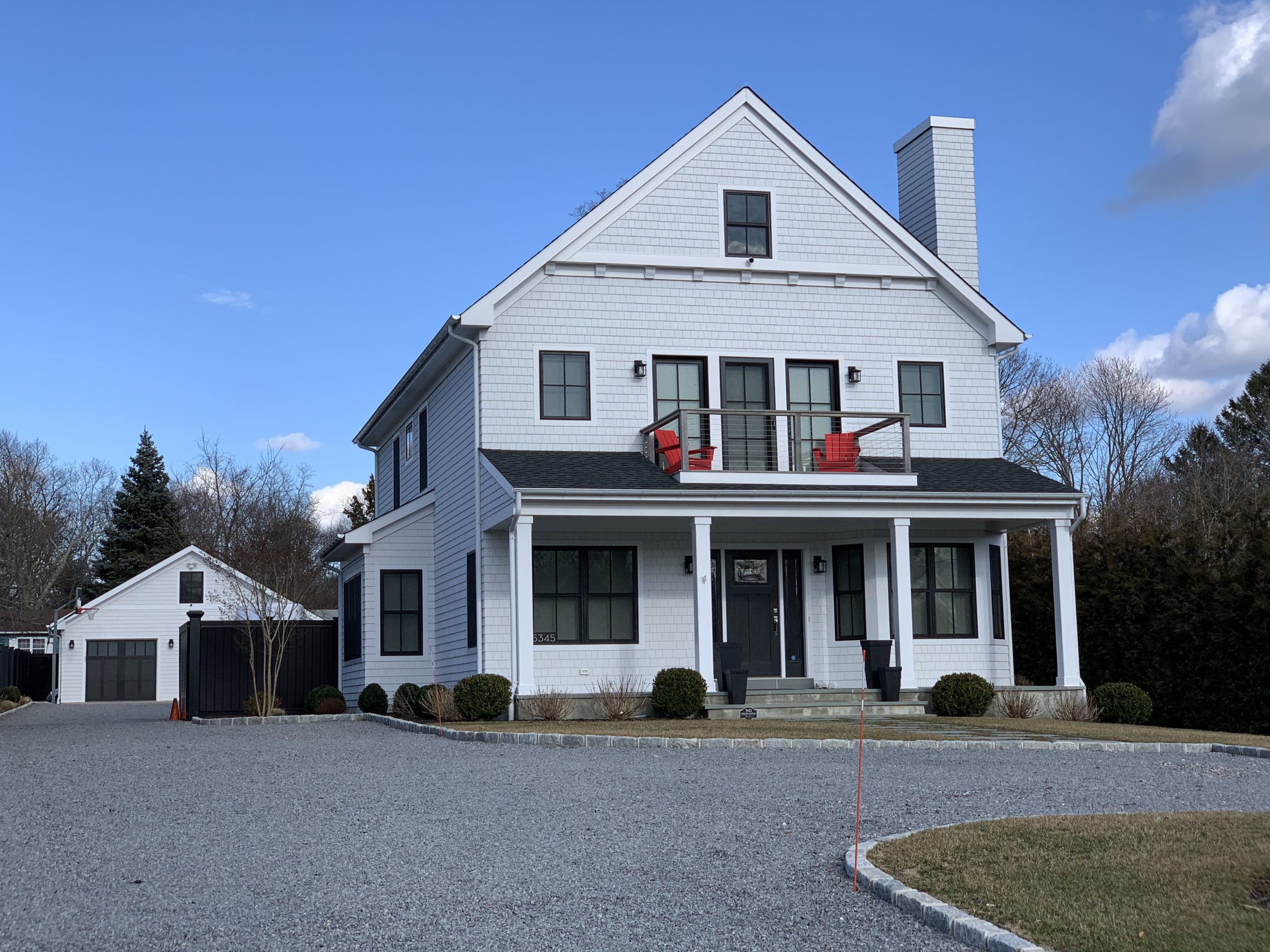
A black plague has slowly but surely infected the entire East End over the last 10 years. Of course, it isn’t just confined to the East End, but it is certainly changing the character of our built environment.
The plague referred to is actually the proliferation of manufactured doors and windows clad in black. Be it fiberglass, Fibrex, metal or wood, this trend dovetails with the Dwell-inspired new modernism taking hold everywhere.
According to Ken Barry, the Andersen Windows business development representative on Long Island, the black look is all the rage and often is used to complement white interiors and exteriors. Black-on-black exteriors have also become popular.
Mike Brylewski, a fenestration specialist with Pella Windows and Doors, contends that the new contemporary windows are sleek, almost “like furniture.” Of his last 30 projects, eight have used all black windows. Windows with gray tinted glass and spacer bars in matte black are also in vogue, and black windows on black walls are becoming prevalent as well.
Black windows and frames aren’t exactly new. They’ve been used on buildings for generations simply to show a contrast between materials. Industrialized black metal windows actually don’t contrast with a wall the way other colors do and, consequently, appear almost as slim shadow lines, which make viewing the outdoors easy.
Today, however, the black window is as much a statement about being up to date as it is a commitment to follow the herd.
A very unscientific survey of my architect colleagues suggests that the raison d’être for this trend has to do with keeping up with the Joneses. There is also appeal in creating a picture frame for views from the inside while looking modern on the outside. Clients want their spaces to be readily defined, and black can go with most wall colors.
When asked what they thought of the use of black for windows and doors, one colleague said, “Feh,” and another noted, “This will hopefully pass SOON!” Furious, another architect went on a verbal rampage about how buildings shouldn’t wear uniforms.
Black frames, however, do have certain problems. In the spring, during pollen season, they show the dust far more than any other color. Window treatments also are important: A black window with a spectacular arrangement of muntin bars or mullions will read as a black hole in a wall if there are no shades or curtains installed on the inside.
The real problem, however, can be seen in places like Sag Harbor.
Once upon a time, the village was truly shabby chic, simply because no one had the money to tart the place up. Most architectural historians will say that “poverty is good for preservation.” The architecture of the village is pluralistic, as it contains styles of architecture that represent more than 350 years of American architectural history. Now, however, the way to modernize historic houses is to remove those old “drafty” wood windows, because the owners have been suckered into thinking they can’t be modified for energy efficiency.
So, many of the replacements, seen all over the village, have been done in black (even wood windows painted black), and, of course, also used especially in new construction. As a result, the village is now becoming a Disney-fied caricature of its former self. Unlike a wood window made from dense, old-growth lumber, which can easily be repaired and last 100 years or more, these new units have a lifespan of 20 to 30 years and will have to be replaced over and over again during the life cycle of the home.
The new black has its place, but context and neighborhood character should be given careful consideration when choosing new windows and doors. Years from now, the black frames of the aughts, teens and ’20s may well be analogous to the harvest gold and avocado green appliances of the 1960s.
Anne Surchin is an East End architect and writer.